How to Grow & Cure Peanuts
Learn how to grow your own peanuts at home – it’s fun and easy!
This guide covers the basics of growing peanuts from start to finish: preparing the soil, planting, caring for, harvesting, and curing.

About Peanuts
Peanuts! Lovely, lovely peanuts. Where would we be without peanut butter, or peanut brittle, or all those other delightful peanut candies and confections we all so love?
These versatile plants have collected several nicknames over the years – you may also sometimes see them referred to as goobers or ground nuts. (Because the “nut” is harvested from underground – peanuts do not grow on trees.)

Peanuts love warm weather!
As tropical plants that originate from Brazil, peanuts don’t care for the cold: it’s warm weather only for this plant!
On top of being picky about how much cold they’re exposed to (peanuts would prefer for that amount to be none), they also take quite a long time to mature: even the quickest among them take a good 110 frost-free days to get a harvest.
That may make you wonder – can I grow peanuts in cold areas?
Colder growing zones and climates will find it more challenging to fit a peanut harvest into their shorter growing seasons, but it’s not impossible.
Those living in USDA Zone 6 or below may want to consider starting seeds indoors to get a head start on the season, transplanting them out into the garden to grow once it’s warmed up. Season extenders, such as hoop-houses and row covers will prove useful if you don’t have a long growing season.
Once you overcome their temperature requirements, however, peanuts aren’t the dreadfully demanding tyrants you might be expecting! If you have a long enough growing season (and you aren’t allergic, of course), why not give growing peanuts a try?

How to Sow Peanuts
When you buy peanut seeds, they’re usually shipped to you in the shell.
Keep them in the shell until you’re ready to plant them: this helps keep them nice and fresh!
You can not plant already cooked or roasted peanuts, or peanuts that have been broken or are missing the papery coating around the individual nuts. Usually this coating is brown, but can also be red, black, or striped- see the photo above for an example of plantable seeds.
When picking out seeds for sowing, select plump, whole seeds that are not damaged or withered.

Preparing the soil
Wherever you decide to plant your peanuts, work your soil over to try and create a bed with loose, well-draining soil, located in a place that gets full sun (at least 8 hours of direct sunlight a day). Most soils will benefit from having some well-rotted compost mixed in.
The most important thing when it comes to preparing the soil for peanuts is to aim for loose soil.
Peanuts form in the soil by way of the yellow flowers that bloom on the plant transforming into ‘pegs’, which then proceed to grow into the soil, where they form into peanut pods. Very hard soil or rocks blocking the way can make your plants struggle to produce a crop.
Depending on your soil, amending may be required. Gardeners with heavy clay soils will want to amend with sand and/or compost to loosen things up.

When to plant peanuts
Peanuts need warm weather without no risk of frost. Direct sow them outside about the same time you would watermelons and winter squash, which is usually about a month after your estimated last frost date.
For us, in Zone 7a Virginia, that means we plant our peanuts sometime in May.
If you have a short growing season and you’re trying to start your peanuts inside early, or you just want to get a head start, sow them in pots about 3-4 weeks before the date you plan to transplant them into the garden.
We’ve found best success with planting 1 seed per 4″ pot, covering the seed with 1″ of soil.
Preparing to sow
Shell out the peanuts, being careful not to break the papery outer coating.
How Much Space Between Peanut Seeds
If planting in rows:
Sow the peanuts 2″ deep, 8″-12″ inches apart, each row being at least 30″ apart from each other. A little space is good, for peanuts- crowding them tends to lead to a scanter harvest.
If planting in hills:
Plant each seed 12″ away from each other, with 3 peanuts per hill. Hills should be at least 2 ft apart from each other.
If you have a problem with critters, like mice, eating your seeds when you sow them, you may want to try sowing the entire pod at once: you will have less seeds to work with this way, but it might just let you grow a crop to harvest without the seeds disappearing on you first!

Growing Peanuts
Germination & Time to Sprout
Peanut seeds germinate quicker indoors than outdoors.
Indoor-started seeds can start showing signs of germination in just four days.
Outdoor seeds might take a week or two to start sprouting, depending on how warm (or cold!) it is outside.
Caring for Peanut Plants
The seedlings are slow-growing.
Keep their bed weeded, and let them grow undisturbed until they’re about 12″ high. You can leave them be, of course, but if you’d like, you can hill up dirt around them, just like you would potatoes. This could lead to a larger harvest!
Larger peanut plants can start to sprawl.
Yellow self-pollinating flowers form on these branches, which will turn into pegs and start trying to make more peanut pods. The branches can snap easily if twisted the wrong way, so be careful!
Working the ground.
It’s recommended to work the ground around peanut plants to loosen it, so that the pegs that form don’t have to fight their way through the soil in order to make more peanuts. However, we don’t usually do this and have still gotten satisfying harvests for several years. If you do decide to work the ground, be careful not to damage the roots.

Peanuts Don’t Need Fertilizer
Peanuts aren’t technically nuts, like tree nuts are. They’re a legume, just like peas and beans, and should not require any fertilizer to grow and produce. Actually, they’re a nitrogen fixer! That means they give nitrogen back to your soil.
When digging up the peanuts to harvest later, you should be able to see the little odd bumps and nodes (nitrogen fixing nodules) on the roots because of this trait.
Water Requirements for Peanut Plants
Peanuts like about an inch of water a week, when they can get it. Some varieties of peanuts may be more drought tolerant than others. The rain may well be regular enough in your location that you might never need to water your peanuts.
Try to give your peanuts regular water when they’re flowering if you can- you’ll still get a harvest without sticking strictly to a weekly watering (as our garden with its regular summer droughts can verify), but the added moisture, when needed, can help to increase your harvest.

We have grown peanuts in poor soil without any amendments before, and still received a good crop. The one thing you might possibly have to add is calcium- if your soil is very depleted of this nutrient, then peanuts may simply refuse to form or mature without rotting first. When in doubt, home soil tests might be worth looking into.
Time for Harvest!
Peanuts should be dug and harvested when they’re fully matured and the foliage of the plants begin to turn yellowed. This ranges from late summer to very early fall for our area. (Zone 7a Virginia)
It is far easier to dig peanuts when it’s dry out, rather than muddy.
Test to See if Plants are Ready
If you’re not sure if your peanuts are ready to harvest, dig up a test plant, and crack open a pod or two. If the nuts are small and don’t fill the shell, you’re early.
But if they’re sprouting, you’re at risk of being too late, and should dig up the rest right now!

How to Dig Up Your Peanuts
All you have to do to harvest peanuts is to dig them up. The peanuts are clinging to the roots of the plant: hold the plant in your hands, and shake it to knock as much dirt off as you can. Set the plant aside, peanuts still attached, and repeat for every plant.
Some peanuts will break off when you do this, and be left behind in the soil. Comb through the peanut bed after you’re done, and collect all these fallen pods. They’re still good!
The amount of peanuts you’ll get from each plant can vary widely. Yield depends on if you hilled or cultivated the soil, if there was a nutrient deficiency or excess, what variety you’re growing, so on and so on. There is no solid number that can be given. On top of that, peanuts may contain any number of seeds inside their shells, usually anywhere from 2 to 4, again, depending on variety.
Once you’ve harvested everything, it’s time for the next step: curing.

Curing (and Seed-Saving!)
While you can safely eat raw peanuts and snack on them right out in your garden, they’re tastier to cure your peanuts first, before you use them!
Hang peanuts plants to dry.
To do this, take string, and tie your peanut plants up in bundles. Hang these bundles up somewhere dark and dry to hang: under a covered porch is one possibility. Hanging them up indoors is another!
Let the bundles of peanuts dry for at least one month. After that, take them down and remove the peanuts from the plant. Compost the dried plants, and keep the peanuts!

Or dry peanuts on a screen.
This method is good to use for those little pods that broke off while you were harvesting, or if you don’t have room to hang up peanuts for a month. Simply snap the peanuts from the plant after harvesting them.
Spread the freshly harvested peanut shells out in a single layer somewhere with good air circulation: a drying rack, meant for herbs or other nuts like black walnuts, works well.
When drying on screens, you’ll also let them dry for a month. Shake them up and stir them around every so often. Toss any that look like they’re starting to rot.

Should you wash the peanut shells before drying them?
If you really care about getting the shells clean, you can wash them. A water hose and a drying rack do a good job of that!
Just make sure you wash the pods right after you harvest them, and also make sure they dry out completely. Improperly dried peanuts invite mold!
Stir around the peanuts regularly on the screen, to prevent mold, rot, and bad peanuts.
If you don’t wash your peanuts, then you’ll want to get rid of the dirt after they’re cured.
Once completely cured, your peanuts are now ready to shell and use, as a snack, or for making whatever you so desire! Roasted peanuts, peanut brittle, peanut butter…
Be sure to check out our homemade peanut butter recipe!
Save some peanut seeds for next year’s crop!
Cured peanuts are also viable seeds! Since peanuts are grown as an annual here in the US, you’ll want to save some to grow more peanuts next year.
Keep a few handfuls of the whole pods, and reserve them for planting next growing season. (We store them in a paper bag, or in a glass jar out of sunlight.)
Plant and collect seeds year after year, and you’ll never have to buy peanut seeds again – unless you want to try a new variety!


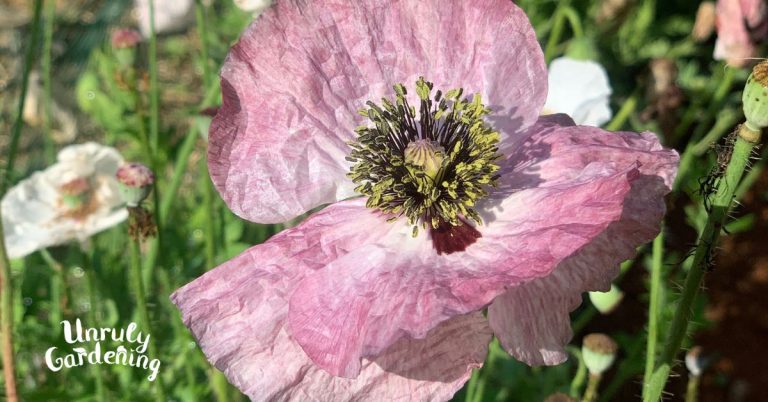
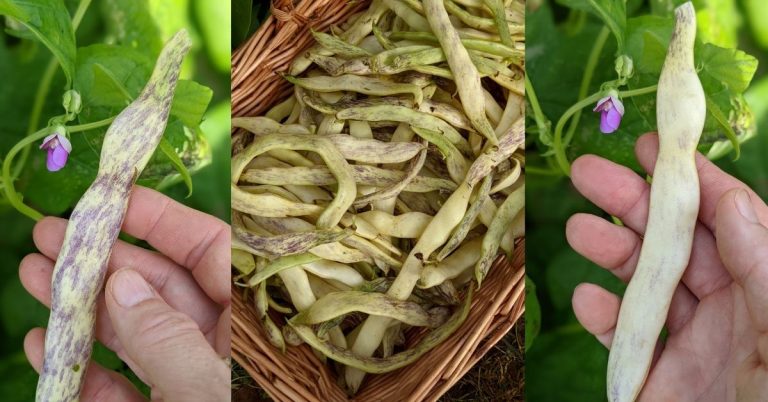
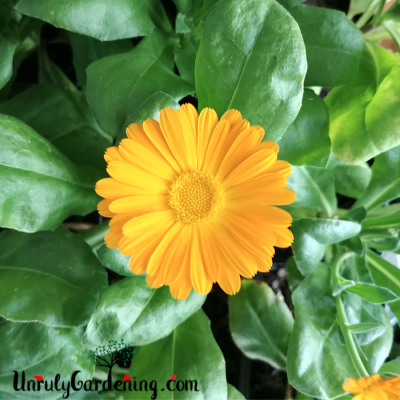
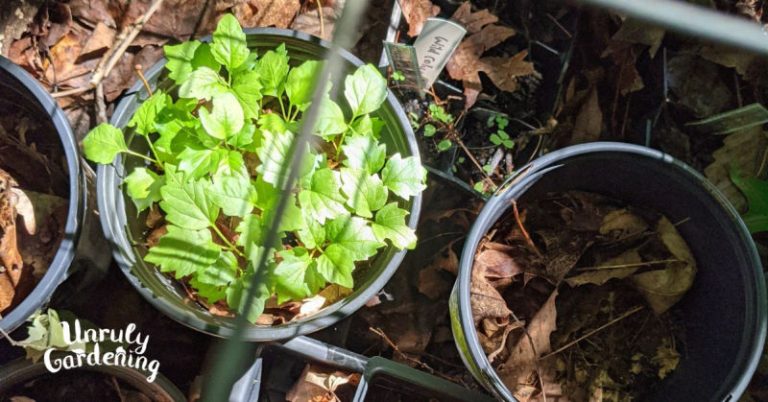
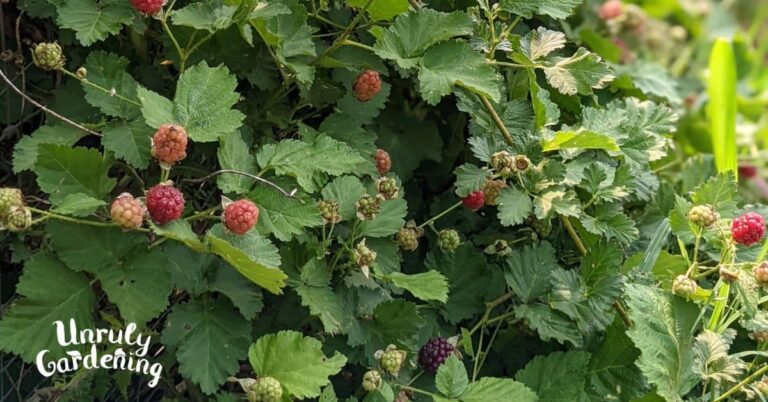
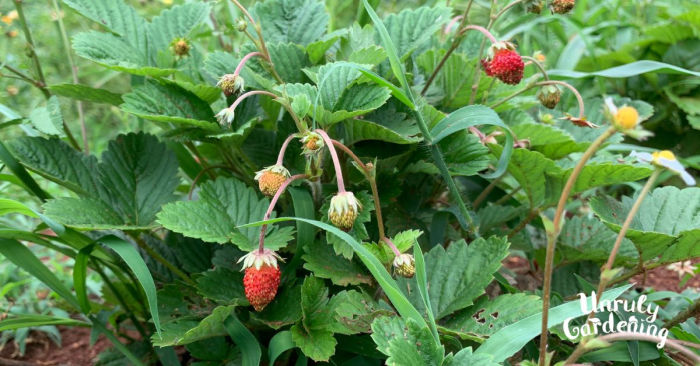
Where can I buy peanut seed starts?
Hi Linda! You might be able to find some at local garden centers, but I’m not positive. We always start from seed – we’ve put seed directly in the ground, and also in small pots to create our own starts.
Do I need to cure if I want boiled peanuts instead of roasted peanuts? Zone 9a
Hi Lawana! No you sure don’t. Boiled peanuts are often made with green (freshly harvested) peanuts. 🙂
Wondering … Is hanging or laying on a drying rack better for drying … or does it matter? And how can you tell if they are dry enough? Thanks much!
Hi Cathy! We tend to lay things out on screens to dry more often, because we have more space for that, and less spots where things can hang without getting bumped into.
It’s mainly a matter of personal preference!
After about a month, they should be nice and dry, but one way to check is to put some in a glass jar and then seal the lid.
Observe the jar for a few days – do you see any condensation forming?
If you see condensation – the peanuts aren’t dry enough yet.
If you don’t see any condensation and none develops in the sealed jar after a week or so, then they should be nice and dry!
You can also store them in a paper bag if you’re not 100% confident in their dryness level.
Hi I have problem, my flowers on the plant after it forms, it seems like wilting or drying out, it doesn’t proceed on the next stage which pegging.
Received 1-1.5 hours of sun.
Watering 1 inch per week.
Average temperature is 38 Celsius.
The dirt is sand with 50% compost mixed in.
The plant’s age is 60 days and there is two plants in the pot, the pot size is 6 gal.
Hi Andrew, I’m so sorry to hear about that!
Your plants are only getting 1 to 1 1/2 hours of sunlight each day?
Peanuts need a lot of sun – 6 to 8 hours of sun each day would be better.
You probably just need to give them more time though – we’ve noticed before that the very first flowers often wither and don’t look like they’re pegging.
Trying giving your plants a few more weeks to grow and then see how they’re doing!
This is my first time growing peanuts. I have hung and dried my peanuts, still attached to the plant. They need a was now that they are dried and removed from the plant. is it better to wash them in their shells or after they have been removed ? I plan to roast them .
Hi Jackie! I would wash them while they are still in their shells.
That way you don’t transfer dirt to the peanuts themselves & they can stay nice and clean.
Roasting sounds like a delicious way to use them!
The neighborhood squirrels decided that i was going to try my hand at growing peanuts, which, to be naively honest, had ZERO clue that raw, shelled peanuts even grew into the plant.
I am not that great in the garden unless it’s with my cacti, but definitely not anything that grows food.
I found the partially broken peanut shell in the soil i had prepped for the cacti to be put into new pots this summer. Had the shell not already had a visible sprout growing from it, then i most likely would have tossed it aside without another thought.
i thought it was pretty awesome, so i put it in its own pot, with a deep drain dish under it, cause i know i wont water it how i need to. All I have done is make sure there is always about 1/2″-1″ of water in the tray and left it outside on our deck, which gets full sun from sunrise, up until about 6pm.
That’s it.
It’s probably a little under a foot and a half tall and has had and still has little yellow flowers all over it. The leaves are just now starting to yellow out, which is how i found myself here. I was trying to figure out what to do next and you’ve answered all of my questions! Thank you!
Hi Keila, I love how the squirrels gifted you with a peanut plant!
It sounds like you’re taking great care of it too; I’m glad the article was helpful!